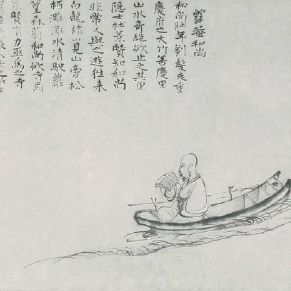Art of virtue
Exhibition on Chinese figure paintings from different dynasties is being held at the Palace Museum, Wang Kaihao reports.


After the Shang Dynasty (c.16th-11th century BC) fell to the army of the Western Zhou Dynasty (c. 11th century-771 BC), two Shang nobles, Boyi and Shuqi, chose to live in a mountain hermitage. They did not want to accept Zhou salaries and fed themselves with wild fern. They starved to death but were worshiped by generations of Chinese scholars throughout ancient times as a symbol of loyalty and a spirit of "elegant retreat".
Their stories are vividly captured in Cai Wei Tu (Plucking Osmunda), a painting from the Southern Song period (1127-1279). Many scholars, from the Yuan Dynasty (1271-1368) to the Qing Dynasty (1644-1911), left their scripts by the scroll painting, probably as endorsement of the two nobles' loyalty.
The painting is now the highlight of an exhibition in the Hall of Literary Brilliance, the gallery at the Palace Museum in Beijing. The Elegant Retreat: Figure Paintings from Across the Ages in the Palace Museum Collection has 76 works, with both artistic and historical importance on display, and runs through October.
Confucian philosopher Mencius had a line describing Chinese literati: "If poor, they attended to their own virtues in solitude; if advanced to dignity, they made the whole country virtuous as well."
For Ren Wanping, deputy director of the Palace Museum and a curator of the exhibition, the line inspired researchers to choose hermits as the theme for the display.
"These literati had a strong emotional attachment to the destiny of the country," Ren says.
They retreated to show that they cared for the people. That still resonates with modern people's emotions, Ren says.
Consequently, a hermitage became a choice for them to hone their own virtues and skills, and become moral models.





































